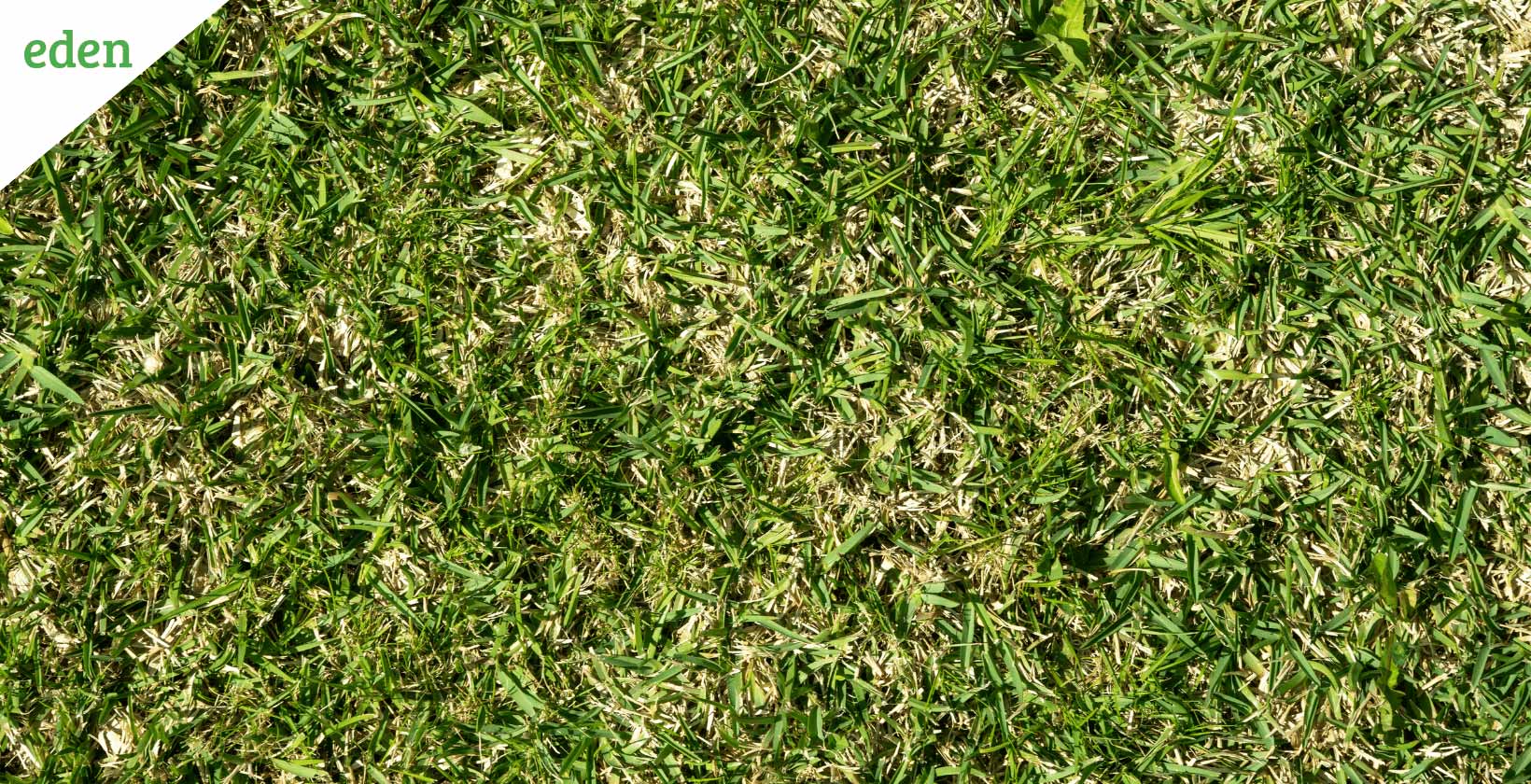
How to Plant St. Augustine Grass
Planting St. Augustine grass involves the following steps- selection of St. Augustine grass cultivar, selection of correct soil type, choosing the appropriate time for planting, planting the grass, fertilizing and irrigation.
Grass cutting taking up all your time? Call us, and we will do it for you!
1. Select a St. Augustine Grass Cultivar
Selecting a St. Augustine grass cultivar is not that difficult if you are familiar with the varied types of St. Augustine grass. To acquire the right cultivar, you must understand the advantages and disadvantages of the various types of St. Augustine grass, from Palmetto to Floratam.
While Sapphire features blue-green color, Seville can withstand shade and drought. You can choose Floratam for its low maintenance requirement, but it has poor shade tolerance. Select the right St. Augustine grass cultivar after evaluating your lawn which will depict the soil type, pH level, soil drainage system, and soil salinity. This way, you would know which type of St. Augustine grass best suits your backyard or lawn.
Eden recommends hiring a professional for this job since an expert can evaluate your lawn properly and prepare a report so that you can make an informed decision on selecting the suitable cultivar.
2. Make Sure that You Have the Correct Soil Type
Ensure that the soil of your lawn is well-drained. It is important to know that St. Augustine grass does not bode well with waterlogged and compact soil. The best soil types for this particular warm-season grass are sandy, well-drained soil with a pH of 5.0 to 7.0. Since St. Augustine grass requires sufficient oxygen supply to support its growth and development, it does not flourish in compacted clay soil due to the lack of oxygen flow.

You can hire an Eden expert to conduct a soil test to determine your soil’s pH level and the nutrients it has or lacks. A soil test can also help you understand the preparation of the ground or soil. Also, it will help you determine the intensity of maintenance required for the St. Augustine grass to thrive on that soil.
3. Choose the Appropriate Time
If you reside in a warm region that experiences winter, which is not expected to be too cold, planting St. Augustine grass can be an advantage for homeowners. Spring and Summer offer an ideal warmth to plant St. Augustine grass plugs or sod when they are receiving full sun, especially 80 to 90 days before your region’s estimated first fall frost. This time frame will give your St. Augustine grass plugs to establish well.
While the fairly mild weather of Spring can help the sod to be fully established by the onset of Summer, planting the grass plugs during Summer will also require enough irrigation for the grass to thrive in your lawn.
If there is an urgency in planting this coarse-textured warm-season plant after summer, then it is wise to be done with the process as early in the fall as possible. Remember that cold months in warmer regions can also slow down the growth of these grasses, and therefore, it is better to establish the St. Augustine grass before the onset of winter to avoid the worst weather conditions.
4. Make a Decision about How to Plant the Grass
You can either follow step-by-step instructions, from preparing your soil to placing the sod into the holes made in the ground or hire a professional landscaper to do the job. The St. Augustine grass thrives in shadier spots than any other turfgrasses, making it a popular choice in Florida, Texas, and other southeastern states of America. But planting it correctly using the right equipment and materials is also crucial for the grass to flourish on your lawn.
If you plan on doing the job all by yourself, then evaluate the soil type, prepare the ground, and follow the planting process for proper propagation. If you want to plant the St. Augustine grass on your existing lawn, then clearing the planting area should be your first step.
Eden suggests that a landscaper who is an expert in this field will know the accurate requirements involved in planting St. Augustine grass. Hence, hiring one wouldn’t be such a bad idea, given the precise needs of planting warm-season grass.
5. Fertilize as Needed
St. Augustine is known for its appealing blue-green hue, which differentiates it from other turf grasses. However, inadequate nutrients can cause the grass to grow a bit spindly or thin. Adequate fertilization during its growing season can assist you in reaching the grass’ full, lush potential.
When choosing the fertilizer, consider the N-P-K ratio (nitrogen, phosphorus, potassium), formulations (liquid, granular, and water-soluble), chemical or organic ingredients, and the ideal time to fertilize. Eden suggests that you must not fertilize your lawn if the grass goes dormant in winter.
Also, overfeeding fertilizers can become toxic within the St. Augustine grass, making your lawn very sick. While a professional can educate you on the fertilization schedule depending on the health of your lawn, it is important to understand that fertilization works best during the growing season.
6. Water the Grass Well
After placing the sods or St. Augustine grass plugs, properly water the entire planting area. Remember that this warm-season grass thrives in wet or moist conditions, but waterlogged soil does not provide a positive result. After the roots are established, irrigating the lawn twice a week will be sufficient for the grass to promote growth.
However, during Summer, you might have to water the newly planted grass frequently to prevent the risk of the grass not receiving any minerals and nutrients from the soil. Also, irrigate your lawn properly during dry winters to prevent excessive dehydration.
How Challenging is Planting St. Augustine Grass?
St. Augustine grass propagates vegetatively. Once this warm-season grass is cultivated, develops on its own through stolons, plugs, and sod. The planting process, however, can be challenging if you aren’t familiar with detailed information on how to plant St. Augustine grass.
To reduce the difficulty level, you must know that St. Augustine grass cannot withstand too much lawn traffic. It would be a waste to put so much work into your backyard and lose all of it to excessive foot traffic. Keep in mind that your lawn is getting sunlight at least four hours a day to promote the growth and development of the St. Augustine Grass.
You should note that this turfgrass is also vulnerable to pests and diseases, which shows that it may be a low-maintenance grass. Still, it requires a little bit of care to look aesthetically pleasing.
Therefore, Eden recommends hiring a professional to plant and evaluate St. Augustine grass on your lawn to achieve your desired curb appeal.
What are the Tips on Care for St. Augustine Grass?
For your better understanding, the experts of Eden have come together to prepare a list of pro tips for maintaining St. Augustine grass.
- Mow the grass appropriately. Keep the mowing height 2 to 4 inches tall.
- Take adequate actions to remove weeds.
- An expert should do occasional evaluation of the lawn to prevent your turfgrass from fungal diseases like gray leaf spots.
- Water the lawn two to four times a week. This irrigation schedule should depend on your soil’s ability to hold moisture.
- Fertilize when required, especially if your grass looks pale.
- Refrain from overwatering your lawn.
- An iron supplement during the Summer can help you achieve a green-looking lawn if the grass has turned yellow.
- Keep your irrigation schedule in check since, with different seasons of the year, the watering rate should also increase or decrease, depending on the requirement.
- Apply a pre-emergent herbicide to prevent new crabgrass.
When to Plant St. Augustine Grass
The best time of the year to plant St. Augustine depends on the region where you reside. Colder months won’t be an issue if you are from a warmer region. However, that doesn’t mean your lawn won’t go dormant, especially when it is a dry winter. You can consider planting St. Augustine grass in the early spring and observe it emerge by the onset of summer.
If you want to plant this grass in the summer, you must remember that frequent lawn watering is vital for its establishment. Even early fall can be one of your options to plant this grass. However, this should be done during the early Fall so that before the harsh weather of winter arrives, you are left with a lush green lawn.

To conclude, to plant St. Augustine grass, follow these steps ‒ select the St. Augustine grass cultivar, select the correct soil type, know the appropriate time for planting, how to plant the grass, fertilization and irrigation. Also, consider the challenges and the time of planting the grass to get the best results.
Eden comprises a team of experts who are well versed in landscaping and irrigation. For further information or high-quality lawn care services, contact us today.
Grass cutting taking up all your time? Call us, and we will do it for you!

